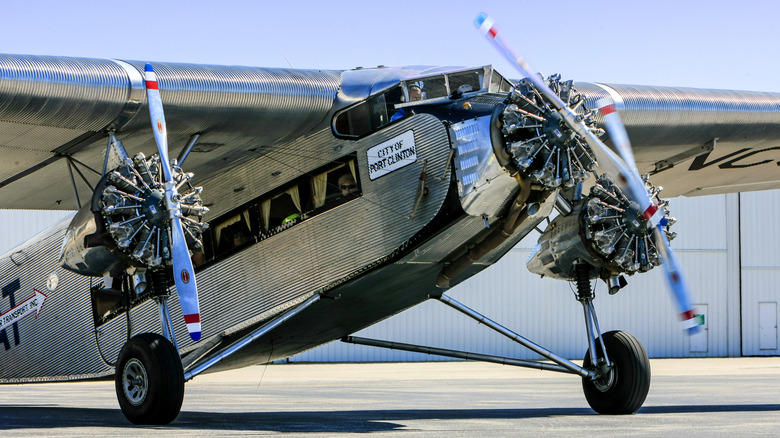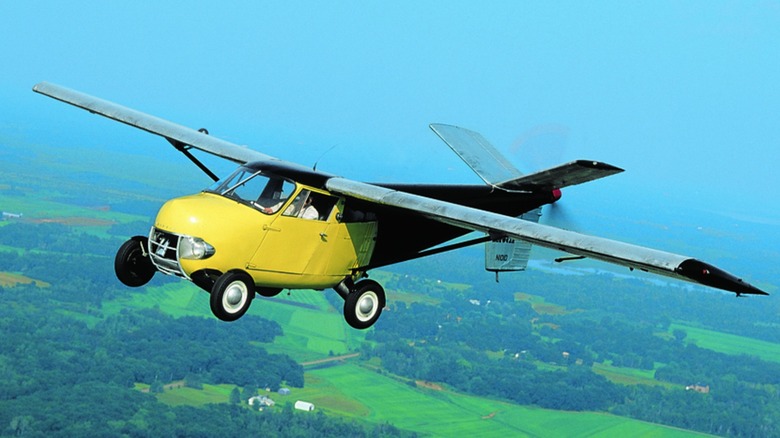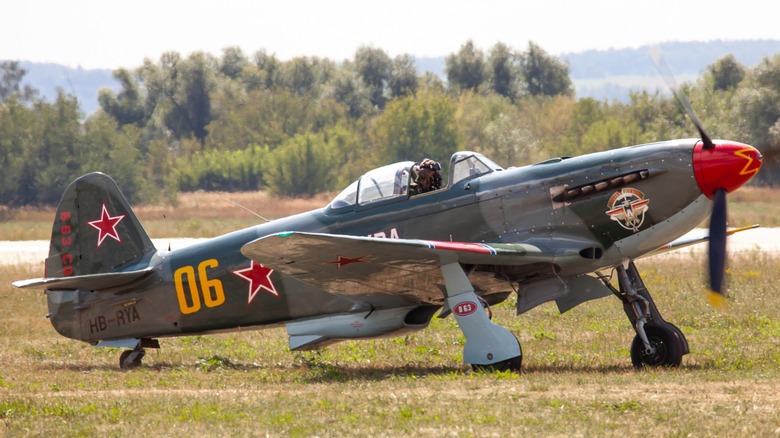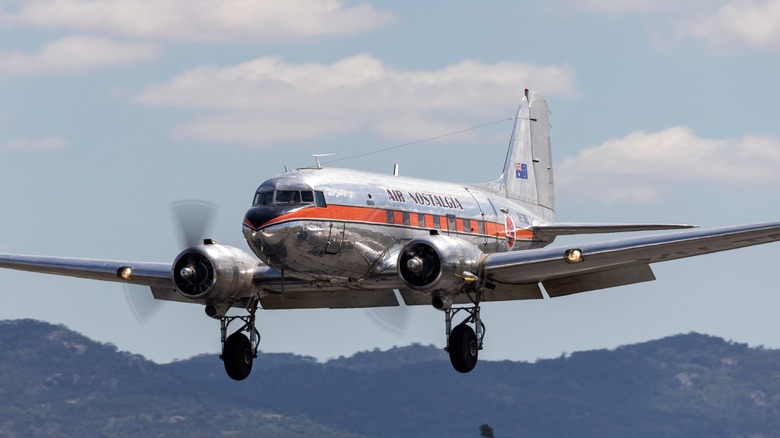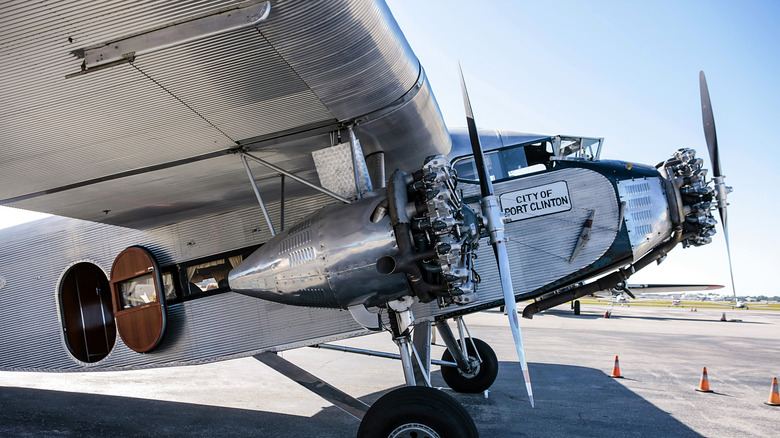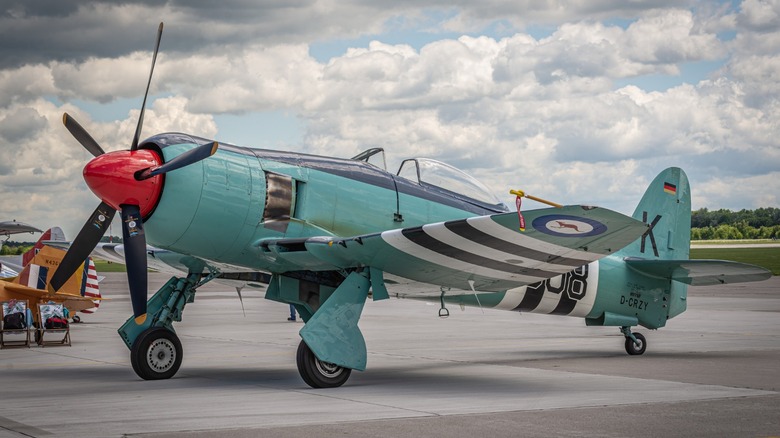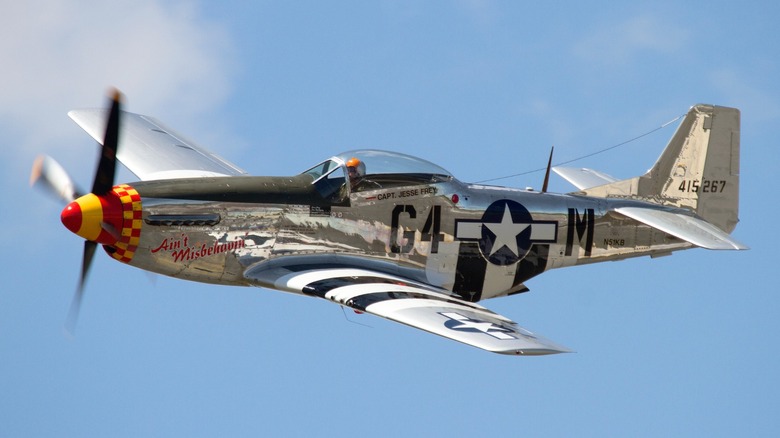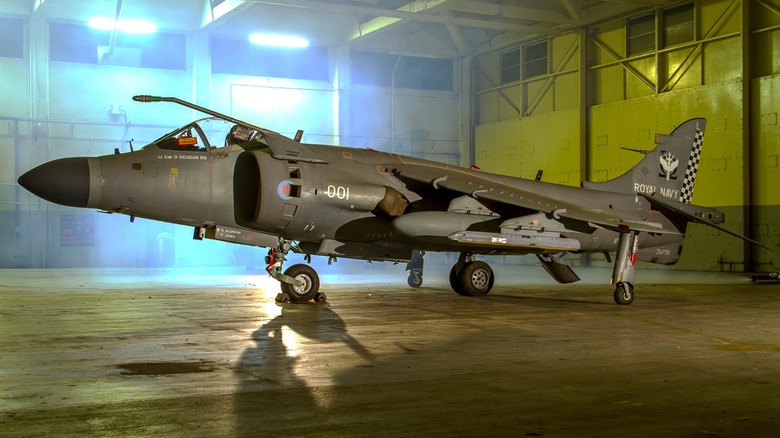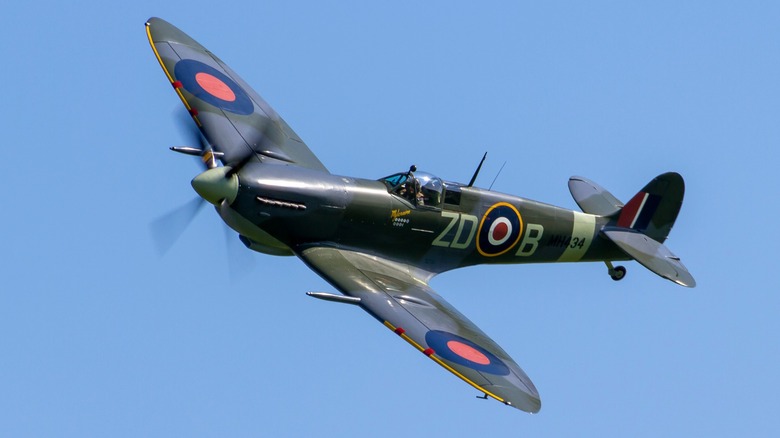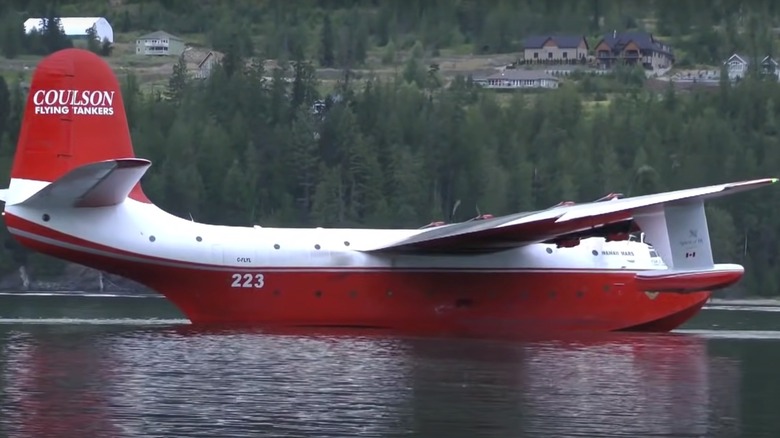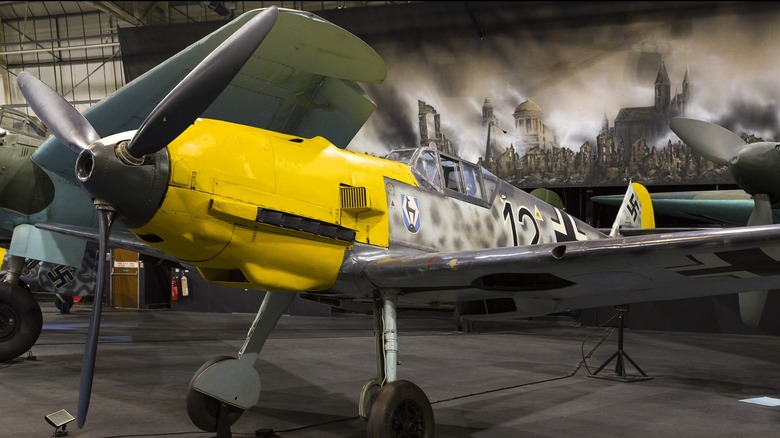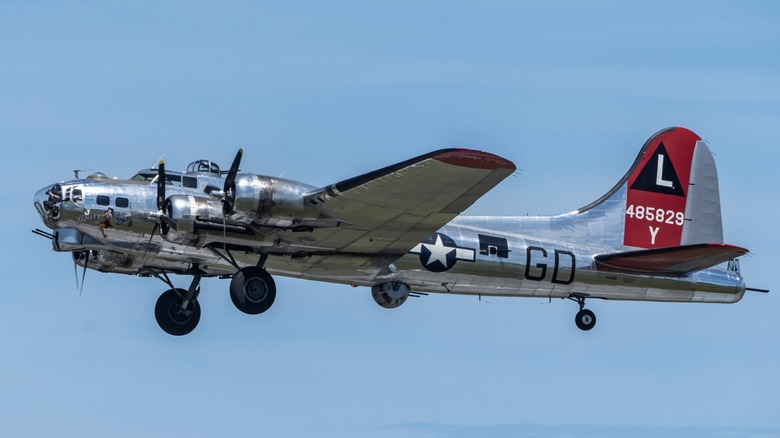11 Old Airplanes That Are Still Worth A Ton Of Money Today
Collecting antiques and vintage items is a popular activity for people everywhere. Sometimes, however, the hobby can get rather costly. Classic car ownership can take up a lot of time and huge sums of money, but it pales in comparison to doing the same with vintage aircraft. Owning any aircraft is expensive, but maintaining one that has been out of production for decades presents a range of expenses those of us unfamiliar with general aviation could never anticipate. However, it should be reasonable to assume buying an aircraft, in general, is an expensive proposition — it is.
New aircraft of any size are extraordinarily expensive, with even small examples easily costing hundreds of thousands of dollars. What may be surprising is that older models can be very affordable and do not necessarily rise in value as is typical with vintage and antique cars. You can purchase a huge selection of two or four-seat airplanes for $30,000 or less in good flying condition, and age has little bearing on the price.
However, vintage aircraft from the military, particularly if it was used in combat in a prominent conflict, skyrocket in value. Some unique civilian aircraft can become similarly valuable, but most are reasonably affordable. Therefore, as an exploration of vintage aircraft of any kind that remains highly valuable, we present 11 that are still worth plenty of money today.
1954 Taylor Aerocar — $275,000
Sometimes people have a crazy idea and it remains just that — a crazy idea. However, there are other times that some mad genius follows through on the idea and comes up with something like the Taylor Aerocar aircraft automobile hybrid.
People have had the idea to make flying cars for most of the time that cars and planes have coexisted, but few have actually made one. The Taylor Aerocar, however, was made and it was approved by the U.S. Civil Aeronautics Administration and met the automotive safety standards of its day, which, to be fair, were far less stringent than today's.
Although Taylor had plans to get this into production, which it was ready for, frivolous spending on the promotional budget left nothing left for the actual production of the car slash plane. Despite the failure to get it into the hands of consumers, five were built. This makes it an extremely rare specimen and valuable as well. The last time one, which is still airworthy, went up for sale was at Barrett-Jackson Scottsdale in 2020, where it sold for $275,000.
1943 Yakovlev YAK-9U-M — $569,000
While the American Mustangs and the British Spitfires of World War II usually receive all the glory, the Russians were also instrumental in defeating tyranny in Europe. One of the most important aircraft from the Soviet Union at the time was the Yakovlev YAK-9. The German invasion of Russia presented a mortal danger to the country and its blistering speed nearly overcame all Soviet defenses. In response, much of the country's wartime manufacturing was moved east of the Ural Mountains, which is where the Yakovlev YAK-9 was built. The first planes hit the skies in 1942, with total production eventually reaching 16,769.
YAK-9 aircraft were powered by a liquid-cooled V12 piston engine much like other Allied planes, and they were well-matched in the fight against German aircraft. This contributed to the failure of the German invasion by denying them air supremacy, and it was rumored that a YAK-9 was even responsible for downing a German Me 262 jet-powered fighter.
An airworthy YAK-9 is extremely rare today. After the breakup of the Soviet Union, replicas of World War II planes were built in Russia, and many World War II Soviet warbirds seen at air shows were built in the late '90s. These can be found for sale for around $600,000 while a true vintage YAK-3, a smaller variant of the same airframe developed a couple of years later, can be found for around $400,000
1944 Douglas DC-3 — $525,000
While the Douglas DC-3 is far from being the most expensive vintage plane you can buy, it may be the largest. Production of the DC-3 began in 1935 and it began a revolution in commercial air travel before serving in the military as a cargo transport plane as the C-47 Skytrain.
During the early days of the airline industry traveling cross-country by plane could be a lengthy voyage, as flights from New York to Los Angeles required as many as 15 stops and could take up to 25 hours. However, the DC-3 required only three stops and shaved nearly seven hours off the flight time. Furthermore, it offered comfortable accommodations and allowed for full meal service with cocktails. Its dual 1,200 horsepower supercharged engines, cantilevered metal wings, and retractable landing gear are just three of its innovations that significantly changed air travel in the day.
Although production of the DC-3 ended in 1945, many still fly today. Passenger service ended long ago, but they are still used for cargo. Airworthy examples also come up for sale from time to time. A later 1944 model was listed at the time of writing for $525,000, while a C-47 Skytrain nearing completion of a total restoration could be had for $395,000, both of which are veritable bargains compared to contemporary warbirds on offer.
1929 Ford Trimotor — $1.2 million
Ford Motor Company is one of the largest auto manufacturing companies in the world with a long history in the industry. They also made a brief foray into aviation. This happened when Henry Ford plopped down $1 million for the Stout Metal Airplane Company. Although Ford had never flown himself, he saw an opportunity to mass-produce aircraft for commercial aviation. To this end, the company built a single airplane model dubbed the Trimotor.
Its official designation is the 4-AT-E Trimotor and it was a relatively successful venture for Ford. The aircraft was set up to be used for passenger service, cargo, or as crop dusters. Several airlines bought some of the 199 Trimotors built, as did the U.S. government. Not only were they used for mail service and military duty, but Franklin D. Roosevelt was also the first presidential candidate to fly in an airplane in a Trimotor.
Ultimately, the Great Depression killed the aviation arm of the Ford Motor Company, and the Trimotor ended up being the first and only aircraft produced by the company. Surviving examples today are some of the few civilian aircraft that remain highly valuable. Barrett-Jackson auctioned one off in 2009 for $1.2 million.
1953 Hawker Sea Fury FB.MK 11 — $1.7 million
While there was a concerted effort toward the building of jet aircraft after WWII, piston-powered fighters continued in service for many years. An example of one of these aircraft that saw its initial development during wartime but production commencing after the war is the Hawker Sea Fury.
Plans for the aircraft were developed in 1943 using the Hawker Typhoon and Tempest as a base for the new model, but the Royal Air Force canceled its order upon the close of the war. The Royal Navy saw a need to replace its aging carrier-based aircraft and placed an order for the new Fury aircraft, which would end up with its name changed to Sea Fury.
The Sea Fury was the last propeller-driven aircraft to be used by the Royal Navy, and it performed well during the Korean War, even when going up against and downing a fearsome MiG-15 Soviet fighter jet for the only British aerial kill of the conflict. Sea Furies were retired toward the end of the '50s, but many made their way into civilian hands. Airworthy copies are quite valuable today, with one available at the time of writing for $1.7 million.
1944 North American P-51 Mustang — $3 million
One of the heroes of the air during WWII is the North American P-51 Mustang. Widely hailed as the best fighter in the war and produced in huge numbers for the U.S. Air Force, existing copies are national treasures. The Mustang played a crucial part in the victory of Germany -– they were not deployed to the Pacific until 1944 –- owing to its speed and agility, backed up by the massive industrial output of the United States. More than 15,000 copies were built during the war, and Mustangs were responsible for taking down nearly 5,000 enemy aircraft, the most of any allied fighter.
About 2,500 Mustangs were lost during the war and many were scrapped or sold after a consolidation of forces when the war had ended. They continued to serve the U.S. Military throughout the '50s, and the last ones were retired from the Air National Guard in 1957.
Many remain today airworthy examples are still flown for exhibitions. Being one of the most loved and capable fighters from the World War II Allied fleet makes them particularly valuable. Purchasing a Mustang in flying condition will require $3 million or more, depending on whether it fought in certain battles. Even an incomplete fuselage can cost more than half a million dollars.
1979 British Aerospace Sea Harrier — $4.5 million
The British FA-2 Sea Harrier, commonly called the Jump Jet, was in service for many years and required a highly trained and skilled pilot to navigate with its ability for vertical takeoff and landing. The first iteration of the Harrier "Jump Jet" first took off in the late '60s, quickly becoming favorites among marines in the U.K. and U.S. and seeing action in Vietnam as well as the Falklands.
Improvements were made to the airframe and British Aerospace released the Sea Harrier in the '80s to replace the aging fleet of VTOL aircraft in service. These were highly advanced and capable aircraft that continued to serve both countries until being retired in 2006. Today, the F-35B variant of the Joint Strike Fighter fulfills the duties of VTOL service.
While the Sea Harrier is a potent military aircraft featuring highly sophisticated flight systems and engine technology, demilitarized versions are available for civilian purchase, although not very many. A package deal from Courtesy Aircraft of three Harriers is up for sale. One of them is flight ready and is the first and only Harrier certified for civilian use. It was manufactured in 1979 and served in the Royal Air Force before being retired in 2004. Another one is nearly complete and close to being ready for certification while a third one is included for spares. The package deal is up for $4.5 million but will certainly require a special pilot if you want to fly one.
1944 Vickers Supermarine Spitfire MK XI — $4.9 million
For the British, few planes are held in higher regard than that of the Vickers Supermarine Spitfire. As one of the defenders of the island during the Battle of Britain during World War II, It is credited with keeping Germany from crossing the channel and overtaking the whole of Europe. The first Spitfires were in production and ready for the onset of World War II, while improved variants continued to come throughout the war. Spitfires were fitted with the Rolls-Royce Merlin engine, which was shared by P-51 Mustangs as well.
By the end of the Spitfire production run, more than 20,000 copies had been made. Many of them were lost during the war from being shot down or crashed, and, at the war's end, the attention of British defense industries turned immediately to jet-powered aircraft. Remaining Spitfires in airworthy condition are prized possessions today and command fabulous prices. A 1944 Spitfire MK XI located in North Weald, England with its original 1,150 horsepower Merlin engine still flying was available for sale at the time of writing for $4.8 million.
1945 Martin JRM Mars — $5 million
A 1945 Martin JRM3 Mars is the largest operational flying boat in service and before its retirement was one of the longest-serving aircraft in the world. Built in 1945, the Martin JRM Mars is a flying boat conceived of as a bomber before being commissioned it for troop transport over the Pacific. After the war, two planes called the Hawaii Mars and the Philippine Mars were both converted for use as water bombers to fight forest fires in British Columbia. Two of them remained in service for more than 50 years before being retired in 2016. Of the two planes that were in service, only the Hawaii Mars remains airworthy, while the other is slated to go to a museum.
The Hawaii Mars, which has a wingspan as wide as a Boeing 747, was listed for sale sometime after retirement and is still available today. Still located in Vancouver awaiting a buyer, its price is set at $5,000,000. It would be a truly unique piece of history to own, but the purchase price is likely just the beginning of the significant cost of owning this giant flying boat.
1939 Messerschmitt Bf 109 — $6 million
While Mustangs and Spitfires were the heroes of the Allies in World War II, one of the most iconic planes flown by Axis forces was the Messerschmitt Bf 109. The Bf 109 was one of the main aircraft of the Luftwaffe and made up a significant portion of the fleet. Power came from an inverted V12 built either by Junkers or Daimler-Benz. Both benefitted from fuel injection, giving them an advantage over the British Spitfire by tolerating negative g forces without starving the engine of fuel in a dive. However, this made them more complex, expensive, and difficult to produce but provided better visibility for the pilots and easier access for mechanics.
Not all Messerschmitts flew with the Luftwaffe. One of them went up for sale recently that had been in service with the Condor Legion, which was a nationalist force in the Spanish Civil War that received direct aid surreptitiously from Nazi Germany — including fighter planes with German pilots. This particular plane remained in service until 1958 before falling into private hands in 1981. It is said to be the only surviving Bf 109 from the Legion and is listed at $6,500,000.
1942 Boeing B-17 Flying Fortress — $10.5 million
While fighter planes usually receive the most praise and accolades for their part in World War II victories, bombers played an equally crucial role. The Boeing B-17 Flying Fortress bomber started production well before the United States entered World War II, and by the war's end, 12,731 had been built. They were used in every area of operation by the Allies, often flying without any escort and relying on their own robust defensive capabilities. It was in Europe where they were utilized to the greatest degree and the greatest effect.
The majority of B-17 bombers were flown back to the U.S. when the war was over and were sold for scrap and recycled. Some planes continued military service but were repurposed for non-combat roles as more advanced bombers were already deployed. Of those built between 1936 and 1945, only 39 survive. Of those survivors, only eight remain airworthy today, while 18 are on display and another 13 are under restoration.
One B-17 was put up for sale in 2021 from the collection of the late Paul Allen, co-founder of Microsoft. It had been flown to Seattle when he purchased it in 1998 and that is where it remained. At the time of sale, that airframe was disassembled but is said to be in prime condition to be completed and in airworthy condition. The asking price on that was $9 million.
Another B-17 in flying condition was sold by the Lone Star Flight Museum to the Mid-America Flight Museum in 2020, and although the price was not public, it was rumored to be around $10.5 million.
